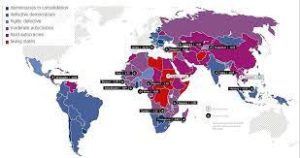Unraveling the Democratic Divide: House Declares Anti-Semitism in Controversial Resolution
Unraveling the Democratic Divide: House Declares Anti-Semitism in Controversial Resolution
Deepening Divisions
The House of Representatives witnessed a heated debate as it passed a Republican-drafted resolution, with more than half of Democrats refusing to back the declaration that “anti-Semitism is anti-Semitism.” The vote, reflecting a growing schism within the Democratic party, exposed divergent views on the connection between criticism of Israel and sentiments towards the Jewish people.

Defining Zionism and Political Intentions
As tensions flared, Representative Jerrold Nadler questioned the resolution’s implications, suggesting it could label Democrats critical of specific Israeli policies as anti-Zionists. The intricacies of Zionism, initially a movement for a Jewish state, added complexity to the discussion. Meanwhile, Republican Representative David Kustoff defended the resolution, accusing Democrats of harboring anti-Semitic views and emphasizing the need to combat such sentiments in Congress and national discourse.
Recent Controversies and Accusations
Recent controversies, including the censure of Representative Rashida Tlaib for her use of a pro-Palestinian slogan, have intensified the scrutiny of left-wing Democrats. Accusations of anti-Semitic language and debates over the intentions behind certain rhetoric have fueled an already charged political landscape. The resolution’s passage adds another layer to the ongoing discourse around anti-Semitism within the Democratic party.
This blog post explores the intricacies of the House’s recent resolution on anti-Semitism, shedding light on the deepening divisions among Democrats and the challenges in navigating the complex relationship between criticism of Israel and combating anti-Semitism.
Q1: What sparked the division among House Democrats over the resolution on anti-Semitism? A1: The division arose from differing views on linking criticism of Israel with anti-Semitism within the party, leading to a controversial vote.
Q2: How did the vote on the Republican-drafted resolution unfold, and what were the key outcomes? A2: The resolution passed with strong Republican support but faced significant opposition from Democrats, revealing a growing divide. The vote ended with 311 in favor, 14 against, and 92 Democrats voting “present.”
Q3: What complexities did Representative Jerrold Nadler highlight regarding the resolution’s implications? A3: Nadler expressed concerns that the resolution could label Democrats critical of specific Israeli policies as anti-Zionists, raising questions about the nuanced understanding of Zionism.
Q4: What accusations were directed at Democrats, and how did Representative David Kustoff respond? A4: Kustoff accused Democrats of harboring anti-Semitic views and emphasized the resolution’s role in combating such sentiments. He stressed the need to address hatred within Congress and national discourse.
Q5: How have recent controversies, such as the censure of Representative Rashida Tlaib, contributed to the charged political landscape? A5: Recent controversies, including Tlaib’s censure for using a pro-Palestinian slogan, intensified scrutiny of left-wing Democrats and fueled accusations of anti-Semitic language, further complicating the political discourse.
Q6: In what ways does the resolution impact the ongoing discourse around anti-Semitism within the Democratic party? A6: The resolution adds another layer to the ongoing debate on anti-Semitism, exposing deepening divisions within the Democratic party and highlighting challenges in navigating the complex relationship between criticism of Israel and combating anti-Semitism.

